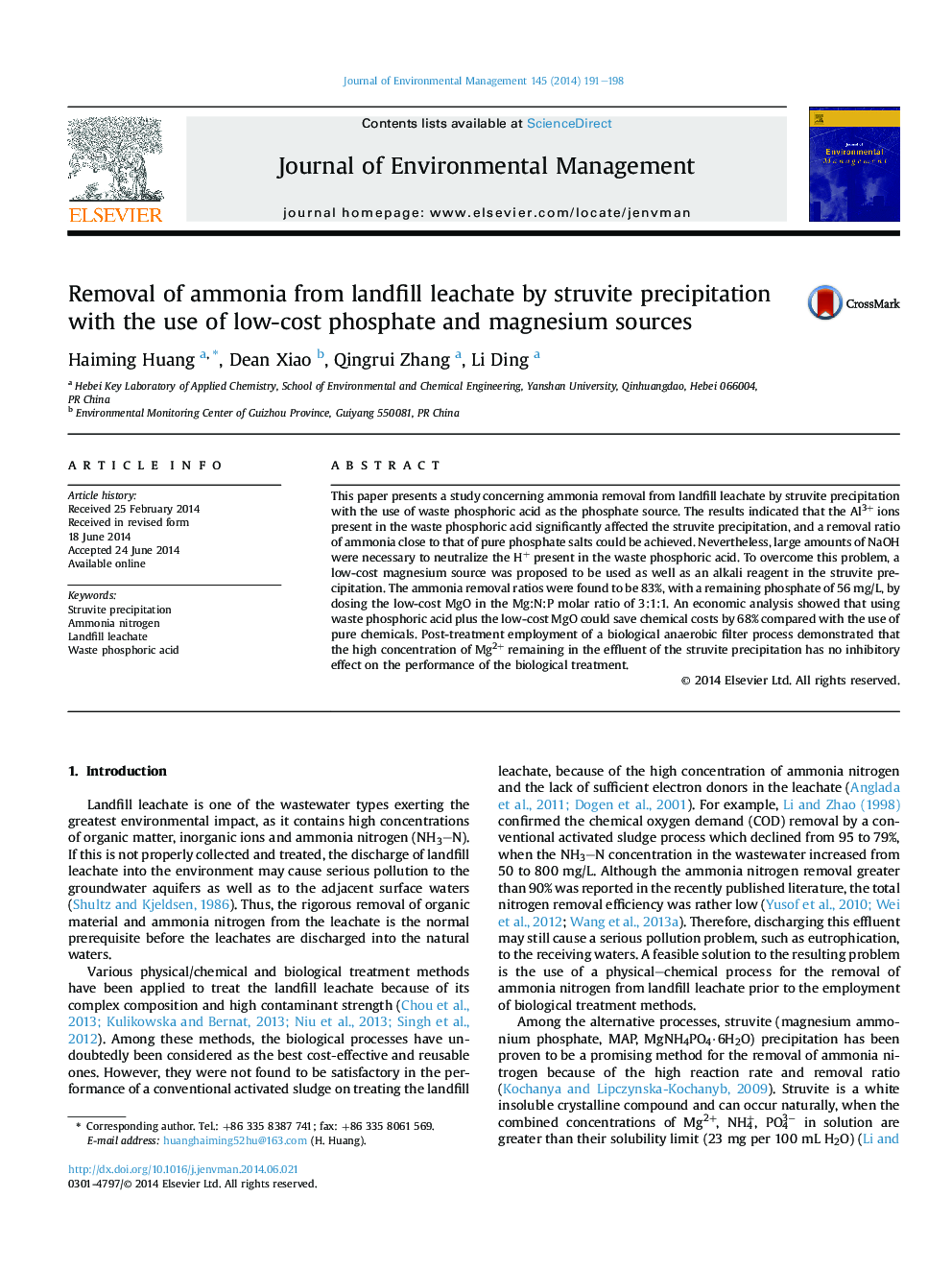| Article ID | Journal | Published Year | Pages | File Type |
|---|---|---|---|---|
| 7483493 | Journal of Environmental Management | 2014 | 8 Pages |
Abstract
This paper presents a study concerning ammonia removal from landfill leachate by struvite precipitation with the use of waste phosphoric acid as the phosphate source. The results indicated that the Al3+ ions present in the waste phosphoric acid significantly affected the struvite precipitation, and a removal ratio of ammonia close to that of pure phosphate salts could be achieved. Nevertheless, large amounts of NaOH were necessary to neutralize the H+ present in the waste phosphoric acid. To overcome this problem, a low-cost magnesium source was proposed to be used as well as an alkali reagent in the struvite precipitation. The ammonia removal ratios were found to be 83%, with a remaining phosphate of 56Â mg/L, by dosing the low-cost MgO in the Mg:N:P molar ratio of 3:1:1. An economic analysis showed that using waste phosphoric acid plus the low-cost MgO could save chemical costs by 68% compared with the use of pure chemicals. Post-treatment employment of a biological anaerobic filter process demonstrated that the high concentration of Mg2+ remaining in the effluent of the struvite precipitation has no inhibitory effect on the performance of the biological treatment.
Related Topics
Physical Sciences and Engineering
Energy
Renewable Energy, Sustainability and the Environment
Authors
Haiming Huang, Dean Xiao, Qingrui Zhang, Li Ding,
